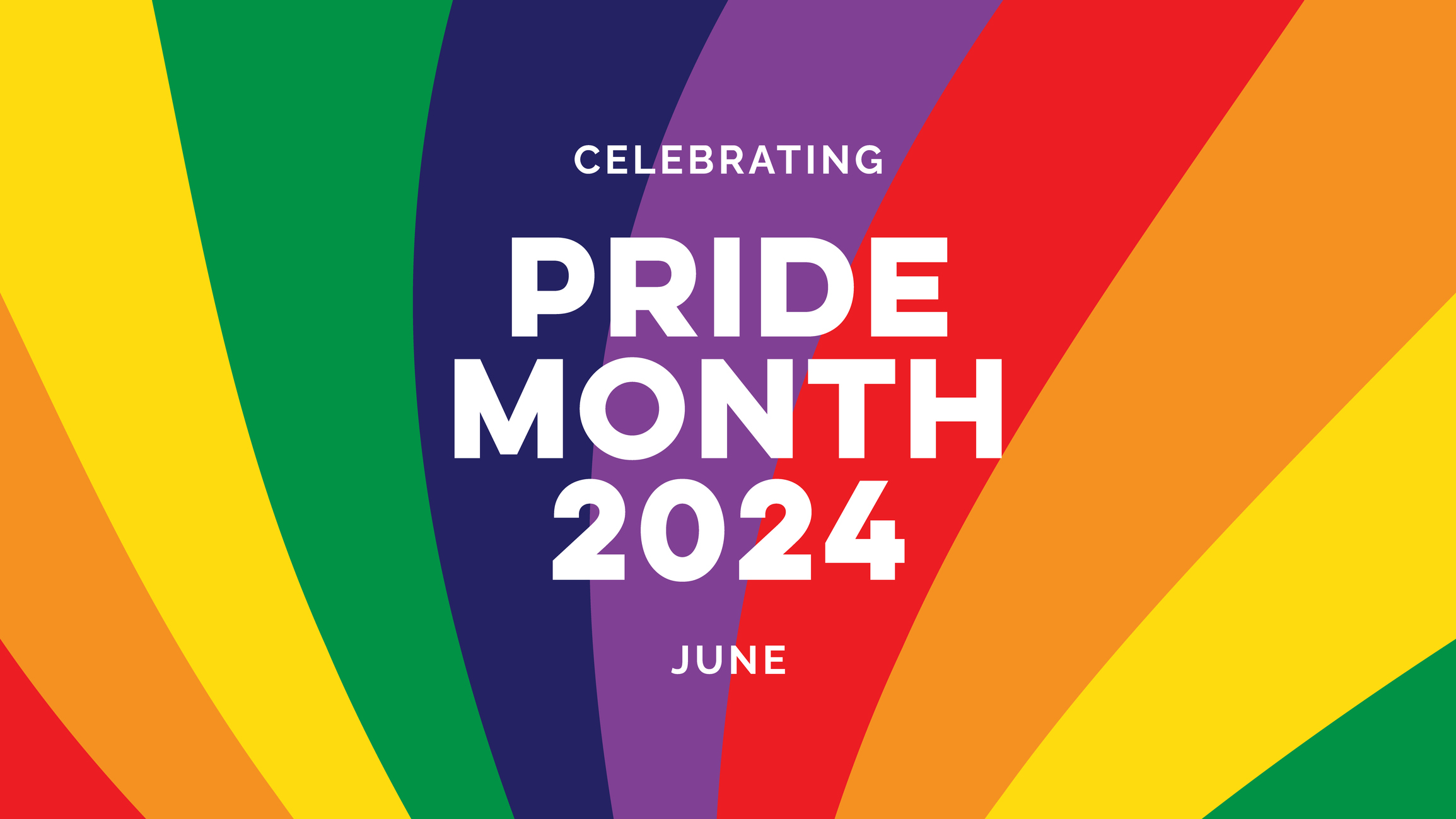Promoting Health Equity: Addressing Substance Use and Mental Health Challenges in LGBTQIA+ Communities This Pride Month
Editor’s Note: This post was originally published by Stephanie Pyle in May 2022 and has been updated.
Research indicates that people who identify as lesbian, gay, bisexual, transgender, queer, or other sexual minorities often face social stigma, discrimination, and stressors that heterosexual individuals do not encounter. Additionally, the LGBTQIA+ community is at a higher risk of experiencing harassment and violence, leading to an increased prevalence of substance use and mental health issues compared to those who identify as heterosexual.
Key Statistics on Substance Use and Mental Health
- Binge and Heavy Drinking: Women who identify as lesbian or bisexual are more likely than women who identify as straight to have engaged in binge drinking in the past month and are about twice as likely to have engaged in heavy drinking during the same period.
- Illicit Drug Use: Individuals who identify as gay or bisexual are two to three times more likely than those who identify as straight to have used illicit drugs other than marijuana in the past year.
- Substance Use Disorders: Approximately one-third of individuals who identify as bisexual women, bisexual men, or gay men had a substance use disorder (SUD) in the past year, compared to about one-fourth of individuals who identify as lesbian women.
- Opioid Use Disorder: Individuals who identify as bisexual women are three times more likely than those who identify as straight women to have had an opioid use disorder in the past year.
- Serious Mental Illness: The prevalence of serious mental illness (SMI) in the past year is more than three times higher among individuals who identify as bisexual men than among those who identify as straight men and more than twice as high among individuals who identify as gay men than among those who identify as straight men.
- Major Depressive Episode: More than one in four individuals who identify as bisexual women and more than one in seven individuals who identify as lesbian women had a major depressive episode (MDE) in the past year. Men who identify as sexual minorities are two to three times more likely than those who identify as straight to have had an MDE in the past year.
- Suicide Attempts: Individuals who identify as bisexual women are six times more likely to have attempted suicide in the past year than those who identify as straight women.
National Survey on Drug Use and Health (NSDUH) Findings
The National Survey on Drug Use and Health (NSDUH) collects data on substance use and mental health issues among adults based on sexual identity. This data tracks changes over time in substance use treatment, mental health issues, and the use of mental health services among sexual minority adults. Key findings reveal that sexual minority adults are more likely than their heterosexual counterparts to experience substance use and mental health issues. They are also more likely to use illicit drugs, smoke cigarettes, and consume alcohol. Furthermore, sexual minority adults have a higher prevalence of substance use disorders, including those related to alcohol, illicit drugs, marijuana, and misuse of pain relievers.
Sexual minority adults are also more likely to need and receive substance use treatment at specialty facilities. They have higher rates of any mental illness (AMI), serious mental illness (SMI), and major depressive episodes (MDE), including those with severe impairment. Among those with AMI, sexual minority adults are more likely to access mental health services.
These findings highlight the importance for behavioral health providers to deliver equitable treatment to LGBTQIA+ and other sexual minority populations, aiming to eliminate disparities in behavioral health.
Treatment Utilization for Substance Use Disorder Among LGBTQIA+ Population
Despite the higher need for treatment, many LGBTQIA+ individuals do not access necessary services. Studies show that sexual minority respondents with substance use disorders generally have lower treatment utilization rates compared to heterosexual individuals. However, some subgroups, such as bisexual individuals based on sexual attraction, show higher treatment utilization rates. Barriers to treatment include not feeling ready for help, financial inadequacy, and previous negative experiences related to sexual identity.
Removing Barriers to Treatment and Increasing Utilization
To improve treatment utilization, it is crucial to address and remove barriers faced by LGBTQIA+ individuals. Strategies identified in research include:
- Creating a Welcoming Environment: Structuring physical spaces to be non-stigmatizing and welcoming, such as displaying LGBTQIA+ inclusive symbols and providing gender-neutral restrooms.
- Diverse Staff: Ensuring staff diversity to reflect the clientele and providing training to treat sexual minorities effectively.
- Tailored Intake and Treatment Programs: Asking about gender identity and sexual preference during intake to address unique needs and ensure appropriate support.
- Referral and Linkages: Connecting clients with LGBTQIA+-specific support groups and services to provide comprehensive care.
- Organizational Commitment: Promoting diversity at all levels, from staff to board members, and ensuring ongoing cultural competency training.
- Inclusive Treatment Philosophies: Mainstreaming sexual minority clients with the general population while ensuring safety and support.
Tools for Raising Cultural Awareness and Increasing Cultural Sensitivity
Implementing culturally and linguistically appropriate services (CLAS) is essential. The U.S. Department of Health and Human Services Office of Minority Health has developed 15 action steps to advance health equity, improve quality, and eliminate health care disparities. These steps include providing effective and respectful care, promoting diverse leadership and workforce, offering language assistance, and engaging in continuous improvement and accountability.
By using these strategies and tools, behavioral health providers can create a more inclusive and supportive environment for LGBTQIA+ individuals, ensuring health equity and addressing behavioral health disparities effectively.
Resources
Lesbian, Gay, Bisexual, Transgender, Queer, and Intersex (LGBTQI+)– This web page on the Substance Abuse and Mental Health Services Administration (SAMHSA) website provides many resources on the LGBT population include national survey reports, agency and federal initiatives, and related behavioral health resources.
LGBT Training Curricula for Behavioral Health and Primary Care Practitioners – SAMHSA and the Health Resources and Services Administration (HRSA) have compiled a list of professional training curricula to improve the health and well-being of the LGBT population.
Think Cultural Health – This U.S. Department of Health & Human Services (DHHS) website features information, continuing education opportunities, resources, and more for health and health care professionals to learn about culturally and linguistically appropriate services, or CLAS. Launched in 2004, Think Cultural Health is sponsored by the Office of Minority Health.
Improving Cultural Competency for Behavioral Health Professionals – Learn how to better respect and respond to your client’s unique needs in this free, online training.
Challenges and Rewards of a culturally-informed approach to mental Health – Dr. Jessica Dere
Addiction Technology Transfer Center (ATTC) Network upcoming Training and Events for LGBTQ+ Populations (enter LGBT in the keyword search box to find current trainings for those populations).
Pacific Southwest (HHS Region 9) training A Provider’s Introduction to Substance Abuse Treatment for Lesbian, Gay, Bisexual, and Transgender Individuals, 2nd Edition
The Center of Excellence on Racial and Ethnic Minority Young Men Who Have Sex with Men and Other Lesbian, Gay, Bisexual, and Transgender Populations (YMSM+LGBT CoE) – This ATTC Center of Excellence funded by SAMHSA provides education, resources and events “to help providers develop skills to deliver culturally-responsive and evidence based prevention and treatment services for lesbian, gay, bisexual, and transgender populations dealing with co-occurring substance use and mental health disorders. Additionally, the CoE will provide a variety of innovative training and technical assistance resources, including training curricula, webinars, and a website clearinghouse to help providers working with LGBT populations and racial/ethnic minority young men who have sex with men (ages 18-26).”
Article: We Must Set A High Bar For Attributing Psychopathology To Sexual And Gender Minority People – A commentary in the July 18, 2022 issue of the Journal of Clinical Psychiatry advises caution against assuming that sexually and gender diverse individuals are more prone to psychiatric disorders.
Substance Use and Suicide Risk Among LGBTQ Youth – Based on data sourced from The Trevor Project’s 2021 National Survey on LGBTQ Youth Mental Health, this research brief explores the correlation between substance use and suicide risk among a substantial sample of LGBTQ youth.
The American Academy of Child & Adolescent Psychiatry (AACAP) Practice Guidelines– The AACAP Practice Parameter on Sexual Orientation, Gender Nonconformity, and Gender Identity Issues in Children and Adolescentsprovides guidance to help prevent the risk of mental health conditions caused by negative attitudes.
National LGBT Health Education Center – The National LGBT Health Education Center Mission is:
- To advance health equity for LGBTQI+ people and the populations which may intersect with the LGBTQI+ community
- To address and eliminate health disparities for the LGBTQI+ community
- To optimize access to cost-effective health care for the LGBTQI+ community
- To improve the length and quality of life for LGBTQI+ people by providing training and technical assistance to medical providers and staff across the globe
Cultural Genogram – This article describes the use of the cultural genogram as an educational tool for teaching health care professional to address client needs surrounding cultural beliefs and practices.
CASAT Catalyst Podcast: Season 3, Episode 4: Giving Voice to the LGBTQ+ Community
Continuing Education and Professional Development for Behavioral Health Providers
CASAT Learning also offers a self-paced, online course on Ethics and Suicide Prevention in Working with Transgender and Gender Non-Conforming Clients.
Facilitated by Dr. Sarah Steelman, participants can look forward to acquiring knowledge of ethical issues and suicide prevention in working with transgender and gender nonconforming individuals. Inpatient considerations and scholarship on elevated risk of suicide for the community. This will include tips on how to help client advocate for themselves if they go to an inpatient hospital as well as understanding minority stress theory and ways inpatient hospitals can impact a client’s dysphoria and how to help them when they return to your office to work through this. Course content will focus on WPATH (World Professional Association for Transgender Health) evidence-based Standards of Care.
To register for this course, visit CASAT Learning website.
The following are just a few of the tools and resources available on this important topic for behavioral health providers. Additional resources may be found in the CASAT OnDemand Resources & Downloads section of the website.
If you or someone you know is struggling or in crisis, help is available. Call or text 988 or chat 988lifeline.org. To learn how to get support for mental health, drug, and alcohol issues, visit FindSupport.gov.
References
Berg, M. B., Mimiaga, M. J., & Safren, S. A. (2008). Mental health concerns of gay and bisexual men seeking mental health services. Journal of Homosexuality, 54(3), 293-306. doi:10.1080/00918360801982215
Fish, J. N., & Pasley, K. (2015). Sexual (minority) trajectories, mental health, and alcohol use: A longitudinal study of youth as they transition to adulthood. Journal of Youth and Adolescence, 44(8), 1508-1527. doi:10.1007/s10964-015-0280-6
Fisher, D. G., Reynolds, G. L., D’Anna, L. H., Hosmer, D. W., & Hardan-Khalil, K. (2017). Failure to get into substance abuse treatment. Journal of substance abuse treatment, 73, 55–62. doi:10.1016/j.jsat.2016.11.004
Holt, M., Holt, M., Bryant, J., Bryant, J., Newman, C. E., Newman, C. E., . . . Kippax, S. C. (2012). Patterns of alcohol and other drug use associated with major depression among gay men attending general practices in australia. International Journal of Mental Health and Addiction, 10(2), 141-151. doi:10.1007/s11469-011-9330-9
Hardy, K. V., & Laszloffy, T. A. (1995). the cultural genogram: Key to training culturally competent family therapists. Journal of Marital and Family Therapy, 21(3), 227-237. doi:10.1111/j.1752-0606.1995.tb00158.x (https://onlinelibrary-wiley-com.unr.idm.oclc.org/doi/abs/10.1111/j.1752-0606.1995.tb00158.x)
Lee, E., & Kealy, D. (2018). Developing a working model of cross-cultural supervision: A competence- and alliance-based framework. Clinical Social Work Journal, 46(4), 310-320. doi:10.1007/s10615-018-0683-4
Lee, J. H., Gamarel, K. E., Bryant, K. J., Zaller, N. D., & Operario, D. (2016). Discrimination, mental health, and substance use disorders among sexual minority populations. LGBT Health, 3(4), 258-265. doi:10.1089/lgbt.2015.0135
Gutierrez, D. (2018). The role of intersectionality in marriage and family therapy multicultural supervision. The American Journal of Family Therapy, 46(1), 14-26. doi:10.1080/01926187.2018.1437573
D’Aniello, C., Nguyen, H. N., & Piercy, F. P. (2016). Cultural sensitivity as an MFT common factor. The American Journal of Family Therapy, 44(5), 234-244. doi:10.1080/01926187.2016.1223565
Greene-Moton, E., & Minkler, M. (2019). Cultural competence or cultural humility? moving beyond the debate. Health Promotion Practice, , 152483991988491. doi:10.1177/1524839919884912
McCabe, Sean Esteban, Ph.D., MSW, West, B. T., Ph.D, Hughes, Tonda L., Ph.D., RN, FAAN, & Boyd, Carol J., Ph.D., RN, FAAN. (2013). Sexual orientation and substance abuse treatment utilization in the united states: Results from a national survey. Journal of Substance Abuse Treatment, 44(1), 4-12. doi:10.1016/j.jsat.2012.01.007
McNair, R., Pennay, A., Hughes, T. L., Love, S., Valpied, J., & Lubman, D. I. (2018). Health service use by same-sex attracted Australian women for alcohol and mental health issues: a cross-sectional study. BJGP open, 2(2), bjgpopen18X101565. doi:10.3399/bjgpopen18X101565
Medley, G., Lipari, R. N., Bose, J., Cribb, D. S., Kroutil, L. A., & McHenry, G. (2016, October). Sexual orientation and estimates of adult substance use and mental health: Results from the 2015 National Survey on Drug Use and Health. NSDUH Data Review. Retrieved from http://www.samhsa.gov/data/
Mericle, A. A., de Guzman, R., Hemberg, J., Yette, E., Drabble, L., & Trocki, K. (2018). Delivering LGBT-sensitive substance use treatment to sexual minority women. Journal of Gay & Lesbian Social Services, 30(4), 393-408. doi:10.1080/10538720.2018.1512435
Substance Abuse and Mental Health Services Administration. (2023). SAMHSA releases new data on lesbian, gay and bisexual behavioral health. Substance Abuse and Mental Health Services Administration. https://www.samhsa.gov/newsroom/press-announcements/20230613/samhsa-releases-new-data-lesbian-gay-bisexual-behavioral-health
Blog Post Tags:
Related Blog Posts
Related Learning Labs
Related Resources
.
- Buscar Tratamiento de Calidad para Trastornos de uso de Sustancia (Finding Quality Treatment for Substance Use Disorders Spanish Version)
- Finding Quality Treatment for Substance Use Disorders
- Focus On Prevention: Strategies and Programs to Prevent Substance Use
- Monthly Variation in Substance Use Initiation Among Full-Time College Students
- The National Survey on Drug Use and Health (NSDUH) Report: Monthly Variation in Substance Use Initiation Among Adolescents









